Our Story
Our Story
Skee-Ball® History
The Original Alley Game™ since 1908
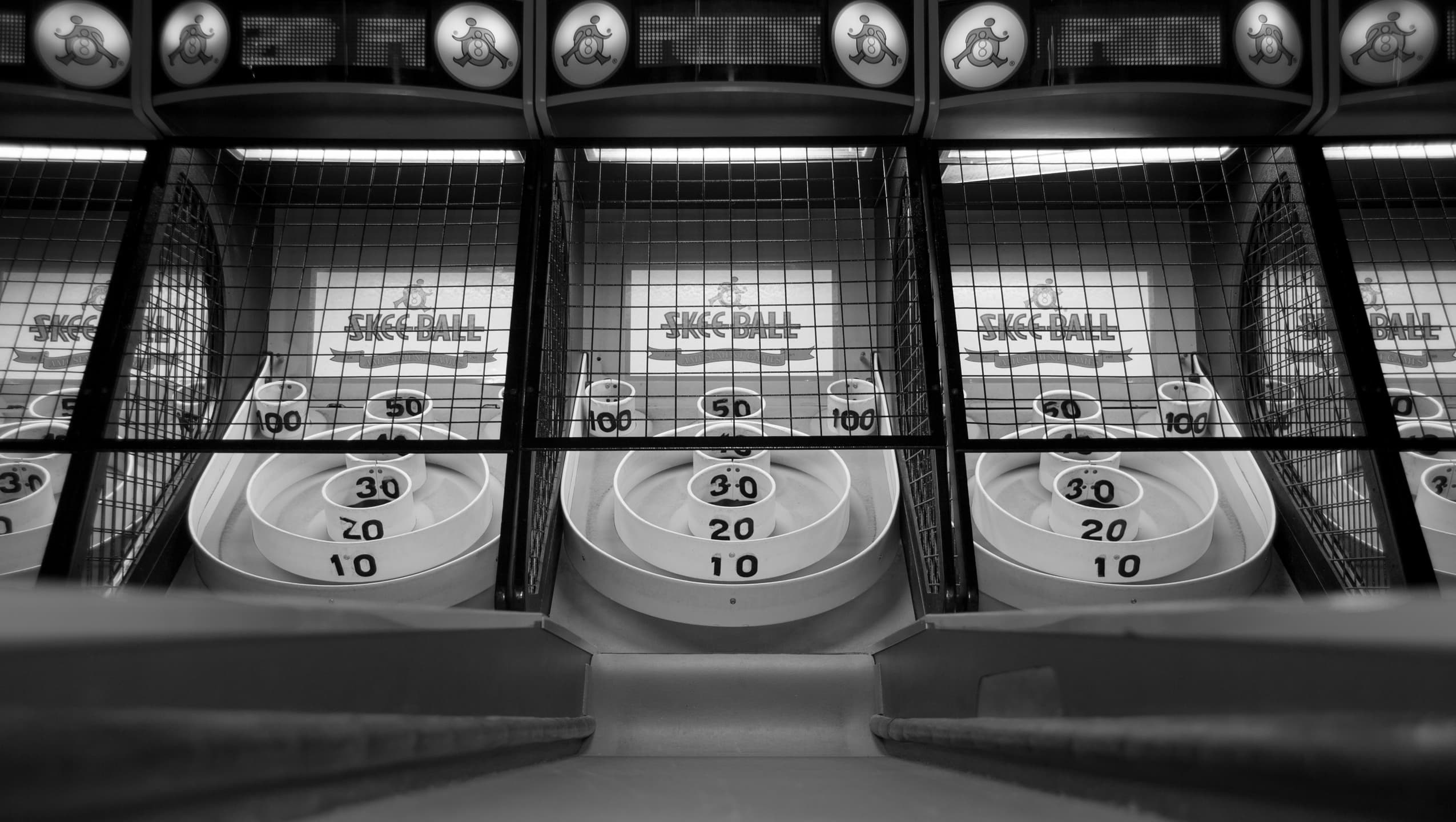
About Us
Since the original Skee-Ball® alleys first hit the Jersey Boardwalk in 1908, we've been lighting up more than just the scoreboard. Over the last 115 years, Skee-Ball has become a timeless tradition – igniting the kid in everyone, inspiring friendly competition, and creating memories that span across generations.
Today, we aspire to continue that tradition by bringing those experiences into home arcades, rec rooms, and entertainment centers all around the world. The extraordinary workforce located in Pulaski, Wisconsin – a small town outside of Green Bay, builds each unit from raw materials with the same quality, craftsmanship, and attention to detail that has rendered Skee-Ball an “arcade classic.” Our promise is straightforward: simple fun for a lifetime of shared memories.
*Photos courtesy of the Thaddeus O. Cooper Collection
1907
Joseph Fourestier Simpson of Vineland, N.J. applied for a patent around a new game idea that had a “skee-jump” mechanism on an alley to launch a ball into targets that had a built-in automatic scoring mechanism.*
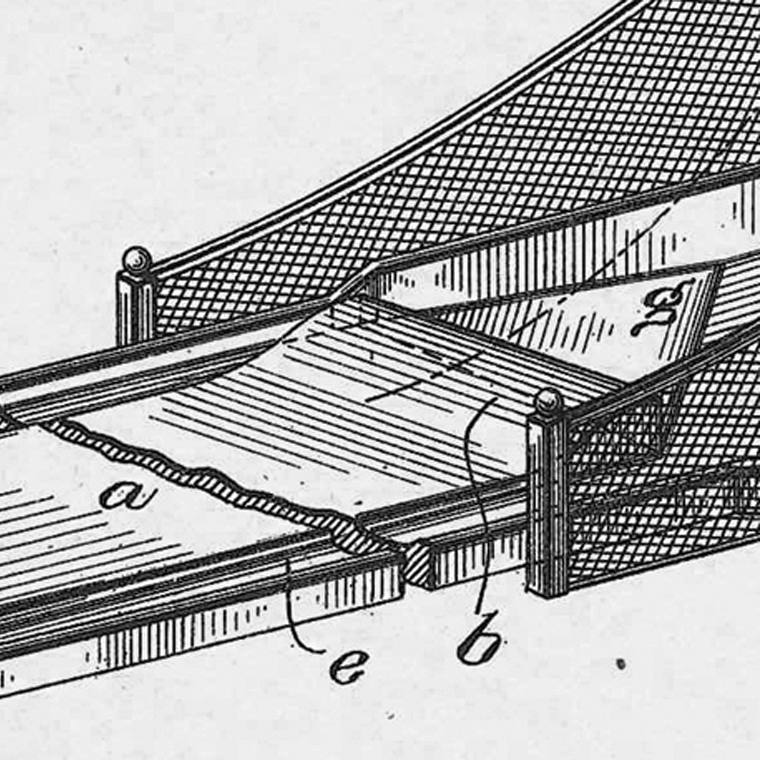
1908
The patent was finally granted after several attempts by Simpson to prove he had something unique. Simpson’s attorney, Chas A Rutter, sent in the $20 filing fee to the Philadelphia Patent Office and a letter stating that half interest in the patent also belonged to William Nice Jr.*

1909
Simpson negotiated a licensing arrangement, collaborating with William Nice Jr. and John W. Harper who formed the Skee-Ball Alley Company, with manufacturing in Philadelphia and an office in Vineland, N.J. The early Skee-Ball alleys were manufactured in two 16 ft. sections, measuring a total of 32 feet in length. The first ad for Skee-Ball appeared in The Billboard with copy that read: “For pleasure resorts, parks and amusement parlors. New and the most popular game ever invented. A most profitable and easily managed game, requires little attention, gives much pleasure, moderate exercise, becomes very fascinating. Send for booklet.”

1910
They sold dozens of alleys into amusement venues up and down the Eastern Seaboard, and into California, Utah, Colorado and many local venues around Philadelphia. The alleys were remarkably successful money-makers and were immensely popular with players. After the death of William Nice Jr. in 1910, Simpson and Harper ran out of money to market the game effectively, and stopped production in 1912.*

1914
J.D. Este of Philadelphia, a wealthy Skee-Ball player and enthusiast, purchased the Skee-Ball Alley Company from Harper for $15,000, hiring him as general manager, and purchased the U.S. patent from Simpson for $25,000. The J.D. Este Company aggressively marketed Skee-Ball into pleasure resorts, college locations, boardwalk venues and even a location in Times Square N.Y.*

1915
Skee-Ball Tournaments became extremely popular, particularly in the Philadelphia area, with both men’s and women’s teams, often sponsored by corporate employers, like US Rubber.*
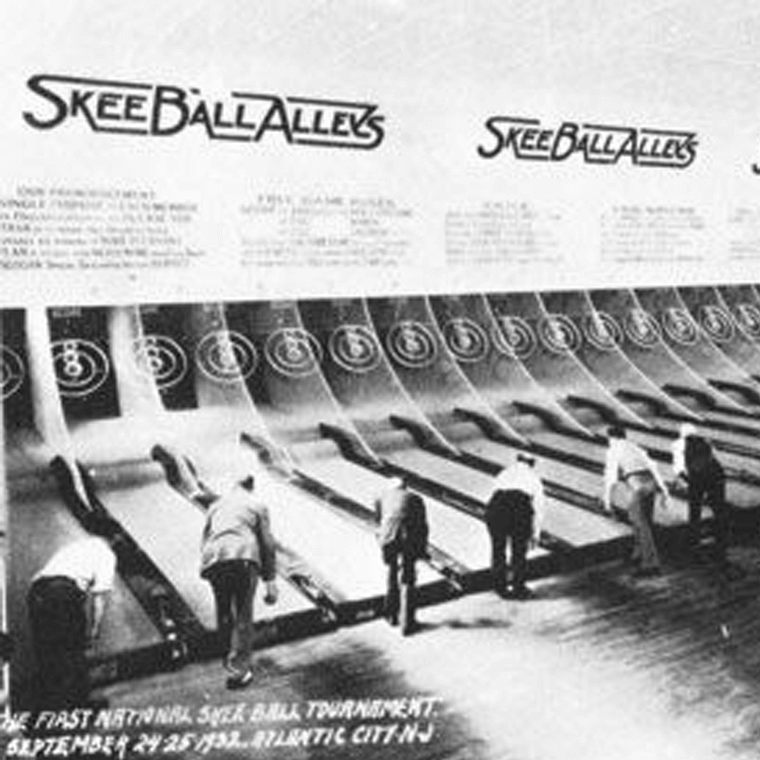
1919
J.D. Este sold his interest in the company to his partners who changed the name to the Skee-Ball Company, Inc.
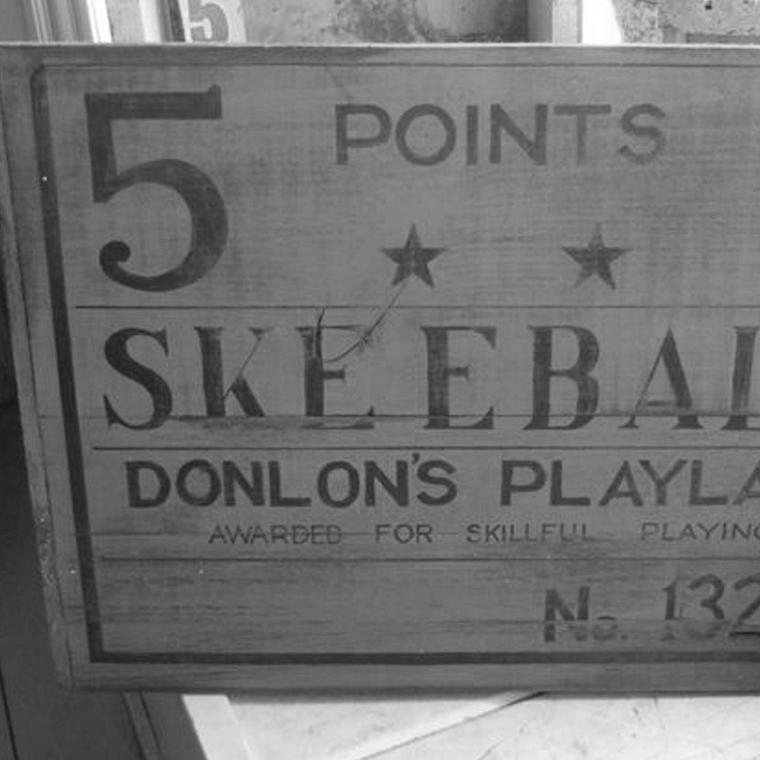
1921
The Skee-Ball Company moved from Philadelphia to Coney Island, NY, a major growth area for the amusement industry in the 1920’s, and partner Morris Goldberg became the new face of the company.*

1928
Goldberg sold the manufacturing rights for Skee-Ball to Herman Bergoffen and Hugo and Maurice Piesen, who renamed the company the National Skee-Ball Company, Inc. Bergoffen, an attorney, trademarked the name “Skee-Ball” that year. After the stock market crash in 1929, the company began producing shorter alleys, easier to fit into both indoor and outdoor amusement venues.*

1932
The first national Skee-Ball tournament was held at Layman Sternbergh’s Skee-Ball Stadium, in Atlantic, NJ on September 24 and 25. Over one hundred players qualified from around the country with the top prize of $1,000, a large sum of money after the Great Depression.
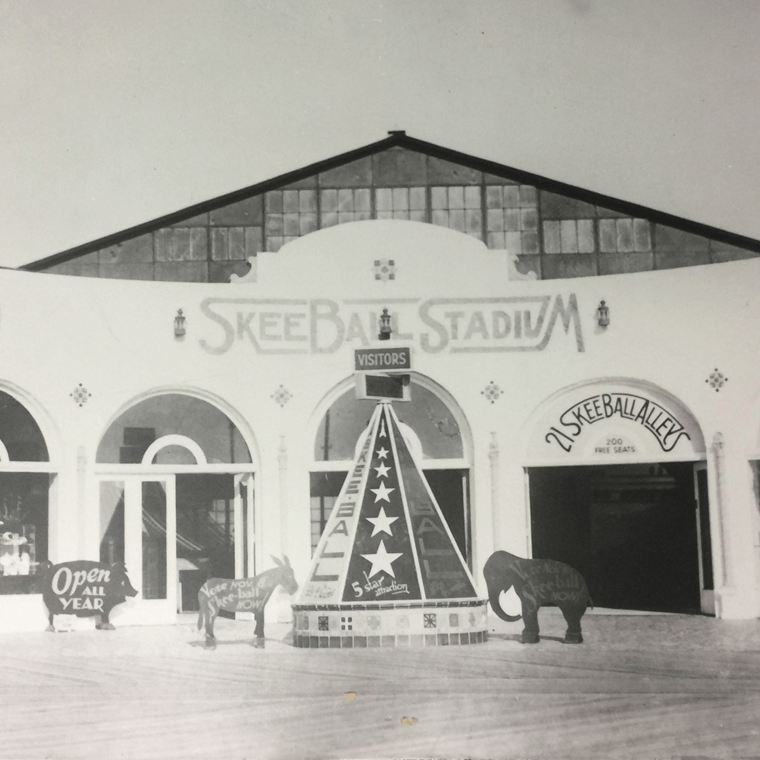
1936
After the death of Bergoffen, and increased competition in the market, Skee-Ball was sold to a strong company in the entertainment market, The Rudolph Wurlitzer Company. Wurlitzer had been watching Skee-Ball alley rollers earn up to four times what their jukeboxes did in taverns and saloons, and they paid the price: $5,000 for the patents, trademarks and right to manufacture, and $200,000 in royalties to be paid over time.

1937
Wurlitzer rapidly produced over 5,000 redesigned Skee-Ball machines on their highly capable assembly line in one year, and then stopped production permanently due to overstocking.*
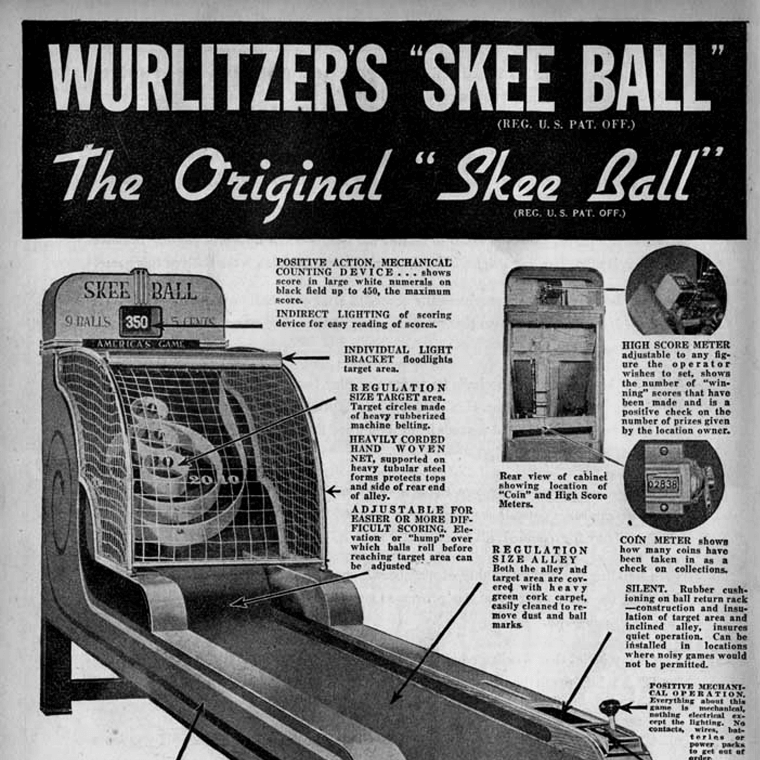
1945
Wurlitzer sold out of most of their stock, 5,022 units- an average of 600 Skee-Ball alleys per year. They realized Skee-Ball alleys may not fit their business and manufacturing model any longer.

1946
Philadelphia Toboggan Company acquired the patents, trademarks and rights to produce Skee-Ball alleys from Wurlitzer.
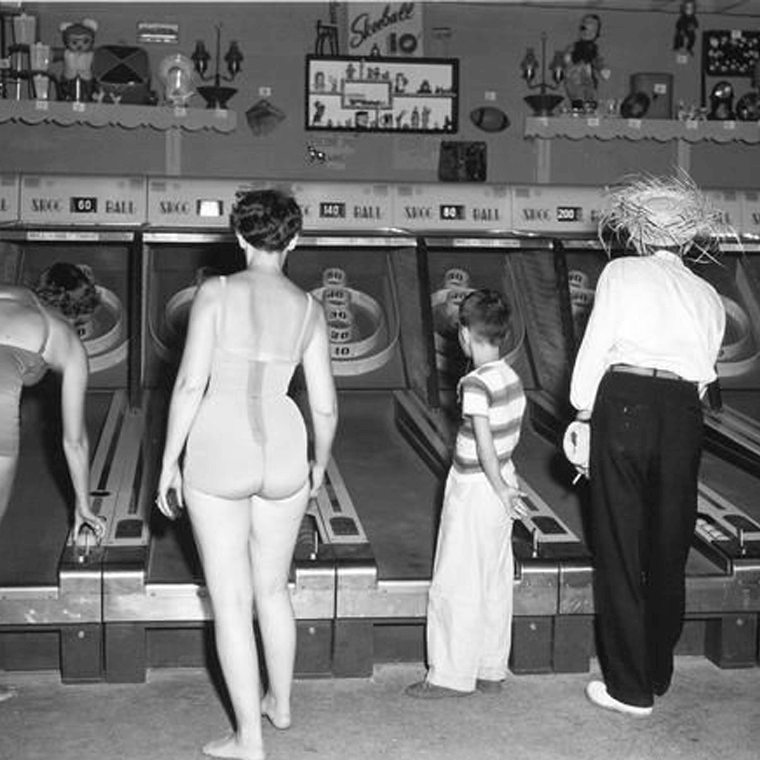
1960
Frank D. Johns, a Daytona Beach amusement park owner, received a patent that truly made Skee-Ball a “no attendant required” redemption game, with the automatic ticket dispenser.
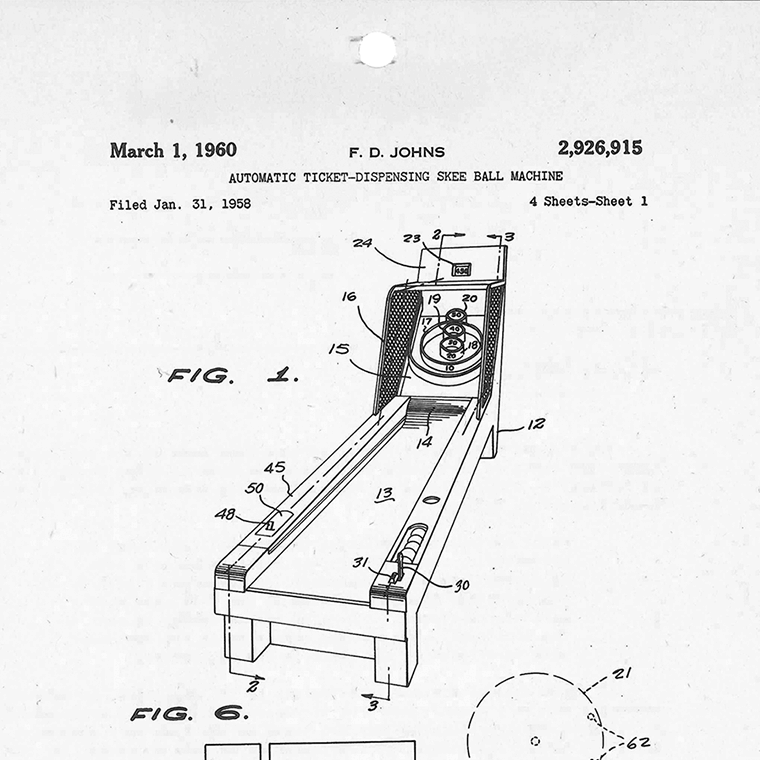
1977
Philadelphia Toboggan Company split their Skee-Ball business off from the rest of their amusement manufacturing, as Skee-Ball, Inc. Bay Tek Games, Inc. was also formed in 1977 making roll down games for the carnival market.
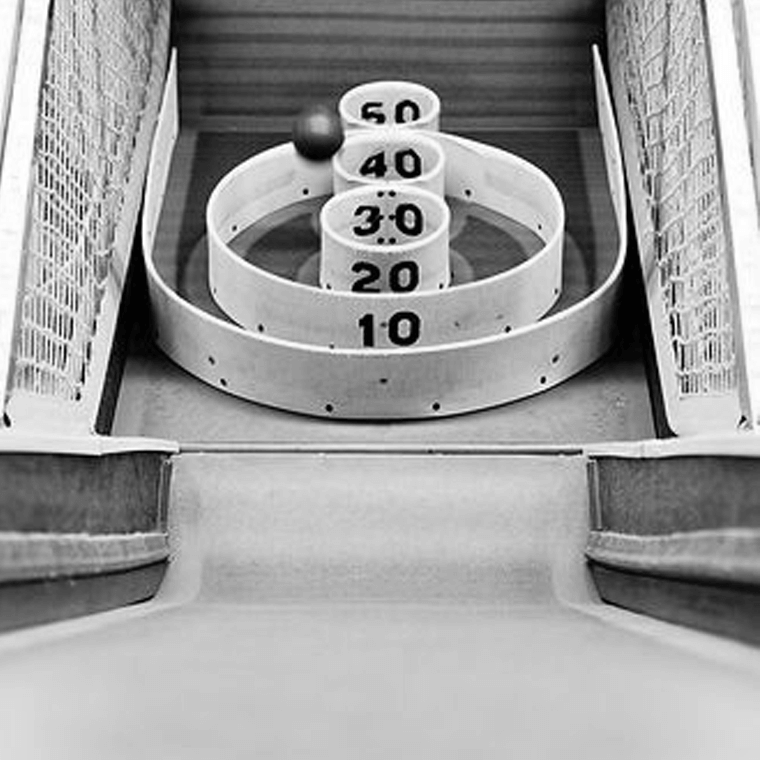
1984
Royalty agreements with Bergoffen and Piesen were finally fulfilled. Joe Sladek and his three partners bought Skee-Ball, Inc.
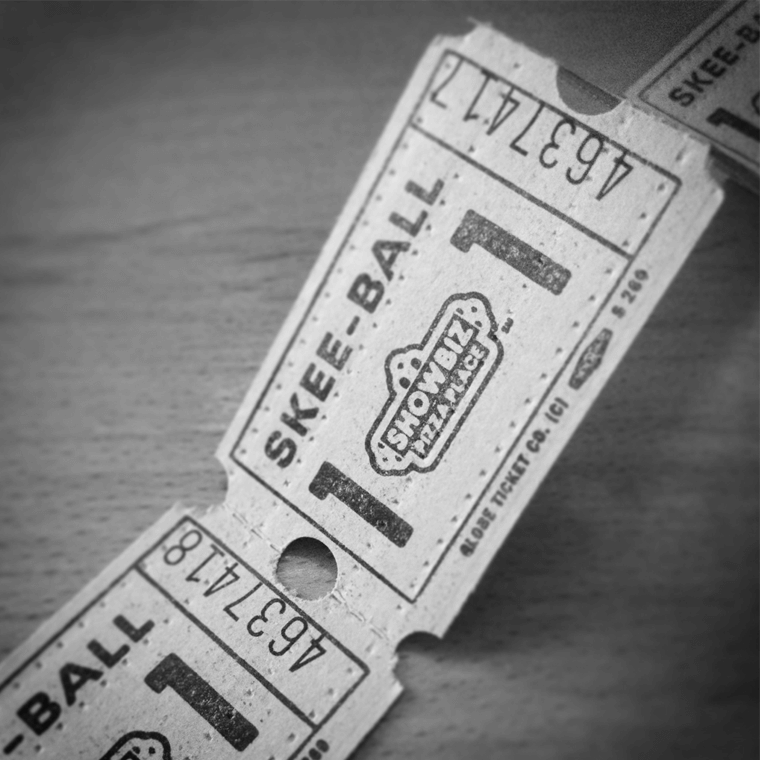
1992
Skee-Ball, Inc. updated its alleys by adding sound effects, musical selections and new electronic components.
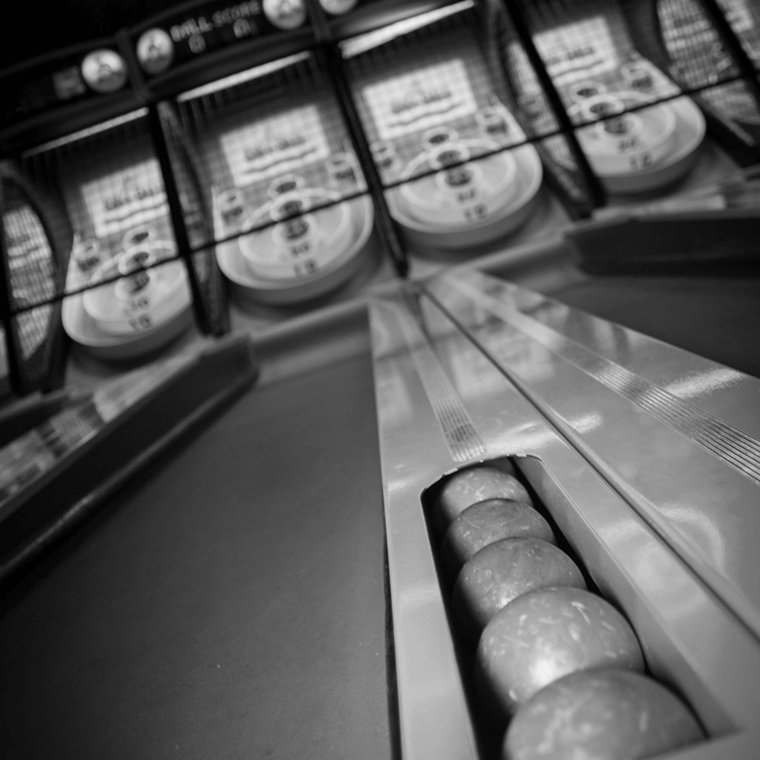
2009
Skee-Ball celebrated its centennial anniversary by introducing a retro edition 13’ centennial alley bowler for avid collectors and the home market. The Skee-Ball app was launched and was the best selling paid app in the Apple iPhone app store for a few weeks until it was knocked off by the Angry Birds™ App.
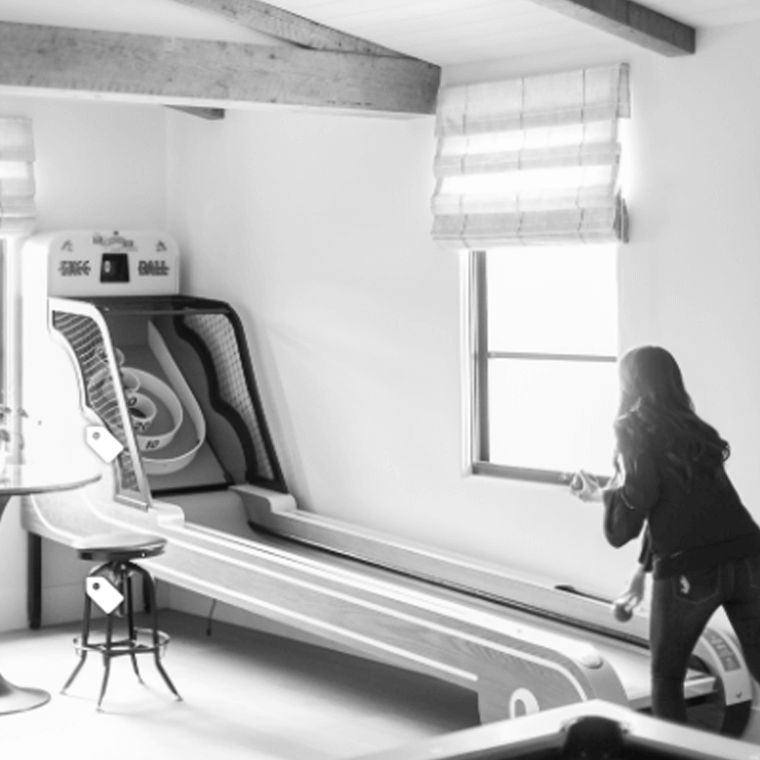
2016
Bay Tek Entertainment, Inc. acquired Skee-Ball, Inc. and moved production to Wisconsin, the first time Skee-Ball production moved away from the East Coast. The company also launches a new modern alley with full lighting and electronic updates to meet the demand of the new, high-end entertainment center growth.
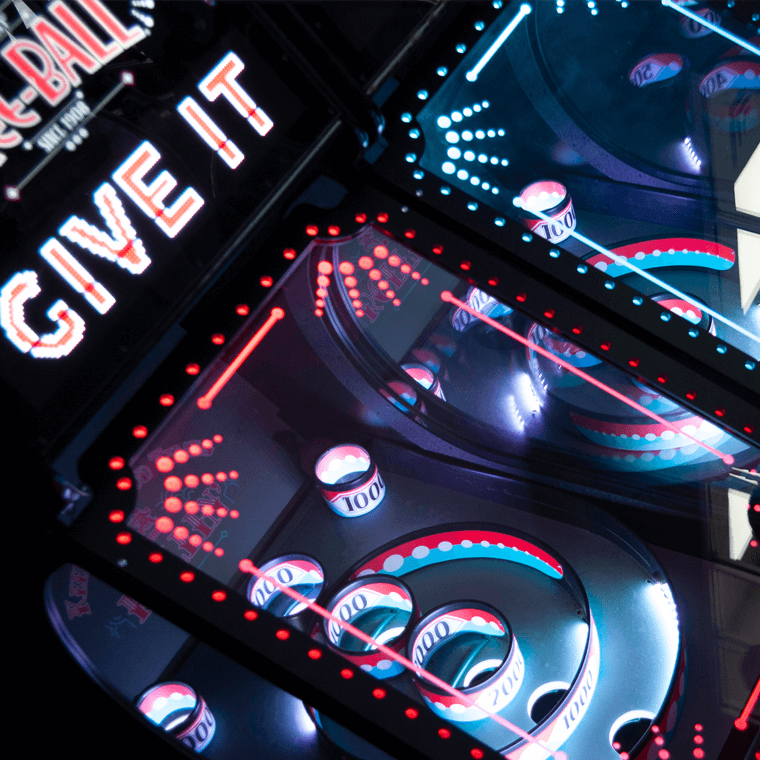
Today
In the throes of a global pandemic, Skee-Ball launched its first ever line of alley rollers designed specifically for the home, with authentic arcade features, scaled to 80% of the commercial arcade size. Whether in alleys or arcade games, in the home or Family Entertainment Center – we aspire to continue a tradition, igniting the kid in everyone, inspiring friendly competition, and creating memories that span across generations.

Skeeter's Story
This is Skeeter. He loves to play on Skee-Ball® alleys. As a young boy, Skeeter would walk down the boardwalk with his mom and pop, and he would light up every time he saw that bank of Skee-Ball alleys. Whenever they would walk by, Skeeter would give an insistent tug at his mom’s arm and say, “Come on, mom. Let’s give it a roll!” And so Skeeter rolled. He rolled a lot. He rolled before school, he rolled after school, and sometimes, he even rolled during school (that’s not recommended, kids).
In fact, Skeeter rolled so much that one day he found himself stuck in his usual Skee-Ball stance. Although he tried and tried to break out of his Skee-Ball stance, (and boy, did he have a great stance), he couldn’t manage to wiggle himself free. So there Skeeter stood, in his Skee-Ball stance, day after day. He ate breakfast in his Skee-Ball stance, he rode the bus to school in his Skee-Ball stance, he did his homework and walked the dog, all while standing in his perfect Skee-Ball stance. When his mom finally took him to the doctor to break Skeeter out of his stance, the doctor replied, “I can’t do that! This stance is too good to fix!”
So there Skeeter stayed, stuck in his Skee-Ball stance, day after day. Rumor has it, Skeeter still stands in his Skee-Ball stance today, still rolling that perfect wooden ball up the launchpad, still aiming for the high score. Skeeter stays in his stance for you, for me, and for all the Skee-Ball lovers worldwide. He stays in his stance to remind us that good times are ahead, even if we biff and miss all the pockets, time after time. Skeeter encourages us to keep on rolling, no matter how hard you struggle, because with enough practice and perseverance, eventually you’re going to hit what you’re aiming toward.

Skee-Ball® is a registered trademark of Bay Tek Entertainment, Inc., a family-owned and operated company that values the industry it serves. Used under license. All rights registered.